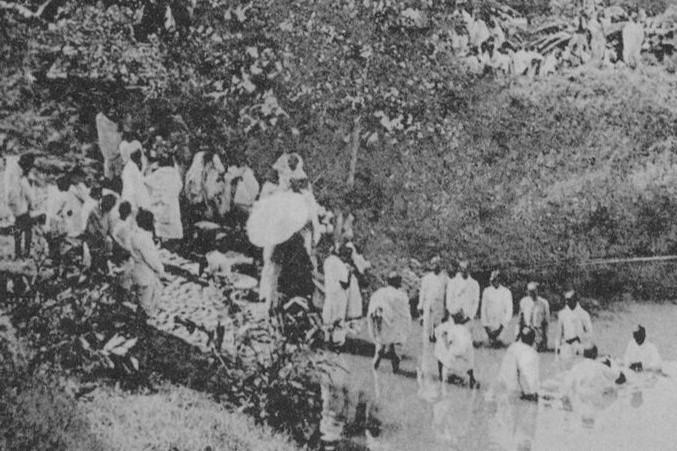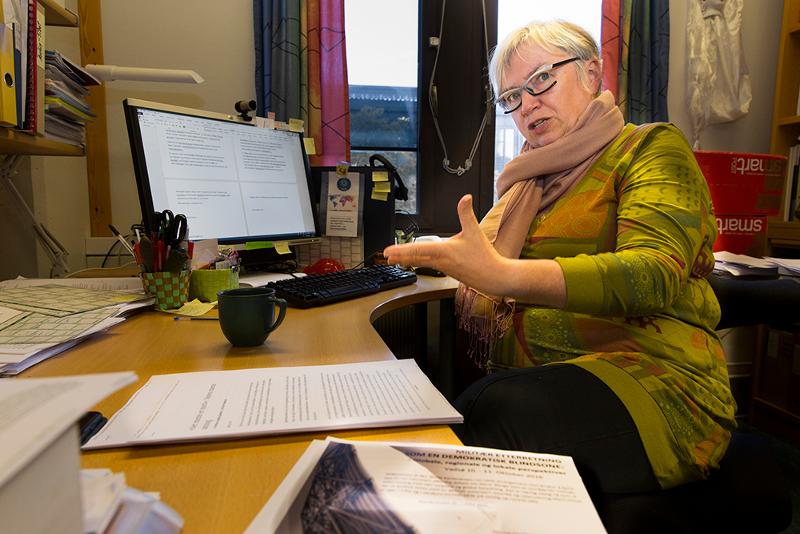Complex interplay between missionaries and indigenous people in India
Missionaries from the Norwegian Santal Mission supported the Santal people's fight for rights and contributed to the preservation of their language and culture. This is revealed in a new book written by UiT Professor Tone Bleie.

The Norwegian Santal Mission has developed close connections with the Santal people over nearly 150 years; an indigenous people living in rainforest areas in the states of Bihar and West Bengal in northeastern India. Tone Bleie, professor of community planning and cultural understanding at UiT, has led a 12-year research project that has resulted in the publication of the book New Testament: Scandinavian missionaries and Santal chiefs from Company and British Crown Rule to Independence (2023).
In her work on the book, Bleie has reviewed documentation from public and private archives collected from three continents, including the santal mission's archives in Hurdal and Copenhagen, the Museum of Cultural History, and the National Library of Norway. In addition, she has used interviews with contemporary witnesses, media sources, and ethnographic data she herself has collected over four decades.
Along the way, she has collaborated with cultural and human rights organizations in India, researchers at Indian universities, and an international team of researchers in the field of mission history.
Santali chieftains collaborated on such an ideological basis with the missionaries to achieve their goals with the British colonial authorities through actions, legal reforms, and lobbying.
Bleie has, among other things, examined how missionary work coincided with colonization in two epochs.
“In one, Denmark-Norway had established trading stations in Bengal and South India from 1706 to 1790, which served as support points for missionary work. This was followed by a period where Norwegian missionaries set up their own stations in Bengal, which were in operation from 1860 to 2000”, says Bleie.
The areas where the missionaries were active reflect, according to Bleie, a colonization process that was initially driven by mercantilism, but which then became more about territorial control, resource extraction, and the pacification of tribes that rebelled.
Ultimately, the purpose of Christian missionary organizations was challenged by a secular solidarity mindset that became increasingly prominent in the post-war era. Bleie has mapped how missionary organizations have adapted to a new paradigm for aid work and found new opportunities they can exploit to their advantage. By studying what has characterized the Santal Mission from an interdisciplinary perspective, she has brought new knowledge about their operations and interaction with the Santal people to light.
“The influence of the Santal Mission on its host society has previously been underestimated by both mission researchers and political actors”, says Bleie.

Pioneering researchers of the santal mission
The Norwegian missionaries navigated a complex landscape, politically, economically, and culturally, when they established themselves in India. To build a foothold for their missionary work, they had to handle vastly different roles.
A primary task was to spread the Evangelical Lutheran faith. The missionaries used local religion as a tool to contextualize the meaning behind the Christian message, and thus took on the role of gurus and wise men. At the same time, they were researchers who contributed to the preservation of the local population's language and cultural heritage. They were also responsible for ensuring welfare, education, and healthcare for the local population through revenues from agriculture and business activities. In this role, they were landowners, builders, and fundraisers.
Those considered as pioneers of the Norwegian Santal Mission were Lars Olav Skrefsrud (1840–1910) and Paul Olav Bodding (1865–1938). They are known for their significant efforts to document the cultural heritage of the Santal people. They did this by developing a written language for the Santal people, a dictionary, transcribing orally transmitted epics and fairy tales, and collecting archaeological artifacts. Original manuscripts, artifacts, and other historical documentation are now managed in a special collection at the Museum of Cultural History and the National Library of Norway.
“The works of Skrefsrud and Bodding are still considered classics in India and Bangladesh, where they are published in new editions continuously”, Bleie states.
Missionaries supported rights struggle
An important reason why the Evangelical Lutheran faith gained a foothold in East India in the 18th and 19th centuries, according to Bleie, is that the Santal Mission supported the Santal people's struggle for their own rights to land and education, self-governance, and welfare. A significant aspect is that the nationalist ideology and Haugian ideals that the Santal Mission brought with them from Norway corresponded well with the Santal people's own egalitarian ideals.
“Santali chieftains collaborated on such an ideological basis with the missionaries to achieve their goals with the British colonial authorities through actions, legal reforms, and lobbying”, Bleie explains.
Bleie's research has also uncovered that the Norwegian missionaries were in a good position to influence political processes in India. Correspondence regarding land acquisitions made by the mission shows that Norwegian missionaries were connected to the inner circle of the British Raj. This gave them advantages when new colonial legislation was being drafted.
Moreover, Bleie has looked at how the rights of minority populations have changed in the legal frameworks of both colonial authorities and the independent states that were formed after World War II. The development of the legal framework is analyzed in light of how human rights are described in international law.
According to Bleie, the rights and culture of the Santal people have been increasingly recognized during this period. The Norwegian Santal Mission no longer exists, but their imprint over the centuries is noticeable, within research and community life, in both Norway and India.


